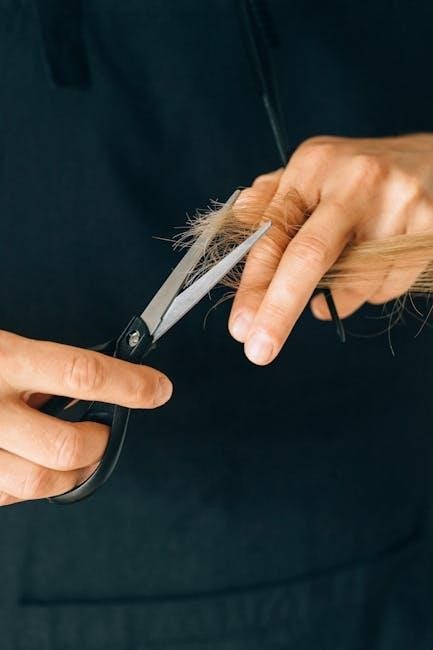autofellatio guide
Autofellatio is a self-pleasure act where individuals stimulate their genitals orally. It’s a form of masturbation requiring flexibility and emotional readiness, with historical roots in various cultures.
What is Autofellatio?
Autofellatio is a sexual act where an individual orally stimulates their own genitals. It is a form of self-masturbation that requires significant flexibility and physical adaptability. This practice is distinct from traditional masturbation, as it involves oral-genital contact with oneself. Autofellatio is considered an advanced sexual technique, often explored by those seeking intense self-pleasure or unique erotic experiences. It is important to approach it with caution and proper preparation.
Historical and Cultural Context
Autofellatio has roots in ancient rituals, such as Tantric practices, where it symbolized self-discovery and spiritual unity. Historically, it was also explored in certain indigenous cultures as a form of sexual and spiritual expression. In modern times, autofellatio gained visibility through adult films and media, with figures like Al Eingang, known as the “King of Self-Suck,” popularizing it in the 1980s. Despite its taboo status, it continues to fascinate and remain a subject of both curiosity and controversy in various cultures.
Physical and Mental Preparation
Autofellatio requires significant flexibility, body awareness, and mental openness. Physical conditioning, such as stretching, and emotional readiness are essential for a safe and enjoyable experience.
Flexibility and Body Requirements
Autofellatio demands exceptional flexibility, particularly in the spine, hips, and hamstrings. Individuals with higher body fat, especially around the abdomen, may need to reduce weight for better access. Regular stretching and exercises can improve mobility, while genetic factors also play a role in natural ability. Patience and consistent practice are essential for achieving the necessary range of motion.
Mental and Emotional Readiness
Mental and emotional readiness is crucial for autofellatio. Overcoming societal taboos and personal stigmas is essential, as self-acceptance plays a significant role. Emotional readiness involves exploring boundaries and being comfortable with self-intimacy. Patience and a positive mindset are key, as the process can be challenging. Building confidence and embracing self-exploration will help individuals approach autofellatio with a healthy and open perspective, fostering personal growth and self-awareness.
Techniques and Methods
Autofellatio techniques involve exploring various positions and postures to achieve self-oral stimulation. Start with basic poses, use aids like pillows for support, and gradually progress to deeper methods.
Basic Positions and Postures
Exploring autofellatio begins with basic positions that maximize comfort and accessibility. The bending-backward posture allows genital access, while lying on your back with legs over the shoulders can enhance reach. Using pillows for support can help maintain balance and reduce strain. These foundational poses require flexibility and patience, making them ideal for beginners to gradually build confidence and skill.
Advanced Techniques for Deepthroat
For those seeking deeper oral penetration, advanced techniques involve precise body alignment and breath control. Deep breathing helps relax throat muscles, while gradual stretching enhances flexibility. Using lubricants can reduce friction and improve comfort. Incorporating prostate stimulation during deepthroat can intensify pleasure. These methods require consistent practice and patience to master, ensuring a safe and enjoyable experience.
Safety and Health Considerations
Autofellatio carries potential risks, such as choking or throat strain, which can lead to serious injuries if not performed carefully. Using lubricants and practicing proper aftercare can help minimize discomfort and ensure safety.
Risks and Potential Injuries
Autofellatio poses risks such as choking, throat strain, and neck injuries due to extreme bending. Improper techniques can lead to overstretching of the penis or jaw, causing discomfort or long-term damage. Insufficient lubrication may result in friction-related injuries or tearing. Additionally, the practice can cause gag reflex activation, potentially leading to vomiting or breathing difficulties. In rare cases, improper alignment or forceful attempts may result in spinal or joint issues. Proper preparation and caution are essential to minimize these risks.
Hygiene and Aftercare Practices
Proper hygiene is crucial to prevent infections and ensure comfort. Always clean the genital and oral areas with mild soap and lukewarm water before and after practice. Use a clean, water-based lubricant to reduce friction and avoid irritation. Aftercare includes gently drying the skin, applying a soothing moisturizer, and wearing loose clothing to prevent chafing. Stay hydrated to flush out bacteria and maintain hygiene. Regular health check-ups are recommended to address any potential issues early.
Tools and Aids for Autofellatio
Lubricants are essential for comfort and safety during autofellatio. Water-based options are recommended as they minimize irritation and are compatible with most materials. Accessories like pillows or benches can aid in positioning, while stretching devices may improve flexibility. Always choose body-safe products to avoid adverse reactions and ensure proper hygiene to prevent infections. Avoid oil-based lubricants with latex products to maintain durability and safety.
Lubricants and Accessories
Lubricants are crucial for comfort and safety during autofellatio. Water-based options are ideal as they reduce friction and are compatible with most materials. Accessories like pillows, benches, or stretching devices can enhance positioning and flexibility. Always opt for body-safe products to avoid irritation and ensure hygiene. Avoid oil-based lubricants with latex items to prevent damage. Proper lubrication and accessory use can significantly improve the experience, making it safer and more enjoyable.
Prosthetics and Training Devices
Prosthetics and training devices can assist individuals in exploring autofellatio safely and effectively. These tools, such as adjustable dildos or specially designed stretchers, help improve flexibility and endurance. Prosthetics can mimic natural sensations, while training devices focus on gradual muscle relaxation and posture alignment. They are particularly useful for beginners or those with limited mobility, offering a gentle and controlled approach to mastering autofellatio techniques without risking injury. Always choose body-safe materials and consult experts for proper use.
The Role of Weight Loss and Body Fat
Excess belly fat can hinder access and comfort during autofellatio. Losing weight improves flexibility and reduces physical strain, making it easier to achieve optimal positioning and results.
How Belly Fat Affects Autofellatio
Excess belly fat can physically obstruct the act of autofellatio by limiting access and reducing maneuverability. It may also strain the lower back and hips, making positioning more challenging. Additionally, belly fat can create a physical barrier between the mouth and genitals, requiring more flexibility and effort to achieve proper alignment. Maintaining a healthy weight is often recommended to enhance comfort and accessibility during the practice.
Diet and Exercise for Optimal Results
A balanced diet low in fat and high in protein supports weight loss and muscle tone, essential for autofellatio. Regular cardio, core-strengthening exercises, and flexibility routines enhance physical readiness. Planks, yoga, and pelvic floor exercises improve posture and endurance. Consistency in these practices ensures better mobility and comfort during the act, making it safer and more enjoyable over time.
Psychological and Emotional Impact
Autofellatio can evoke strong emotions, from empowerment to anxiety. It challenges societal norms, fostering self-acceptance and confidence for those who embrace it. Emotional readiness is crucial.
Overcoming Stigmas and Taboos
Autofellatio often faces societal judgment due to its nature, but embracing it can foster self-acceptance and confidence. Open dialogue and education help reduce stigma, encouraging individuals to explore their desires freely. By normalizing such practices, the taboo surrounding autofellatio can be gradually dismantled, promoting a more inclusive understanding of personal sexuality and autonomy.
Autofellatio as a Form of Self-Exploration
Autofellatio offers a unique path to self-discovery, allowing individuals to explore their sexuality and bodily responses intimately. It fosters self-awareness, enabling deeper understanding of personal preferences and capabilities. This practice can enhance confidence and provide a sense of empowerment, as it challenges societal norms and encourages personal autonomy in sexual expression.
Autofellatio in Media and Pop Culture
Autofellatio is occasionally depicted in adult films and art, sparking curiosity and debate. It’s also discussed in online forums and explored in literature, reflecting its cultural intrigue.
Depiction in Adult Films and Art
Autofellatio is occasionally showcased in adult films, often highlighting exceptional flexibility and self-exploration. In art, it’s depicted as a symbol of self-love and liberation, challenging societal norms. These portrayals spark curiosity and debates about personal freedom and sexual expression, while also inspiring conversations about body autonomy and artistic freedom.
Celebrities and Public Figures Associated with Autofellatio
Al Eingang, known as the “Autofellatio King,” is a notable figure in adult entertainment, famous for his contortionist abilities and performances since the 1980s. He has openly discussed his experiences, making him a prominent advocate for self-exploration. While few mainstream celebrities openly associate with autofellatio, Al Eingang’s prominence highlights its cultural impact and appeal, inspiring conversations about body autonomy and sexual liberation.
Community and Resources
Online forums and communities offer support and shared experiences. Recommended readings and videos provide guidance for those exploring autofellatio.
Online Forums and Support Groups
Online forums and support groups provide a space for individuals to share experiences and tips on autofellatio. These communities foster connection and understanding, offering guidance and resources. Members discuss techniques, challenges, and successes, creating a supportive environment for exploration. Many forums also share recommended videos and reading materials, helping newcomers navigate their journey with confidence and discretion.
Recommended Reading and Videos
Exploring autofellatio? Check out guides like The Autofellatio Handbook for detailed techniques and tips. Videos by Al Eingangs, known as the “King of Self-Suck,” offer visual insights and inspiration. Online resources and forums often share recommended materials, ensuring you have access to reliable and practical information to enhance your journey safely and effectively.




